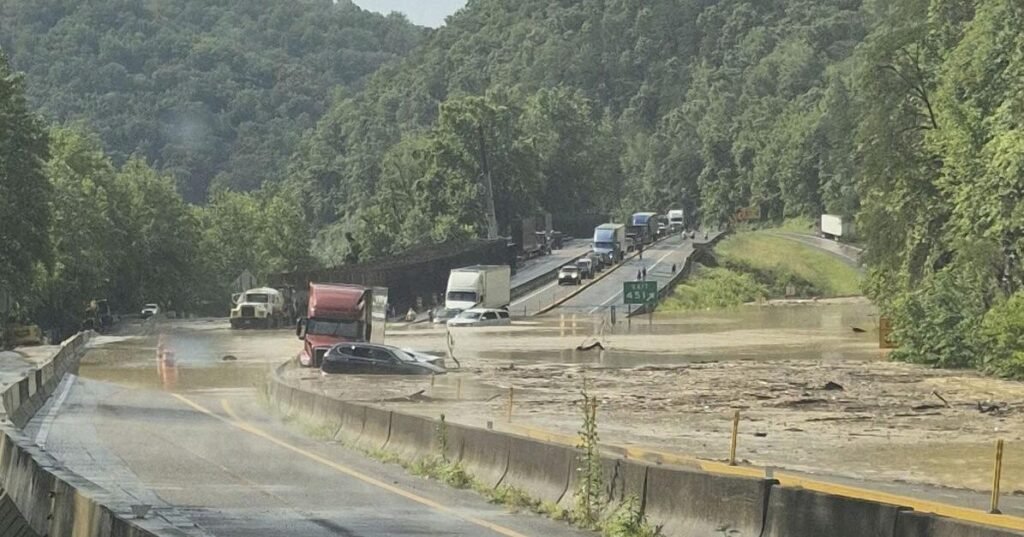I-40 Reopens Through Great Smoky Mountains After Flooding and Rock Slide
The narrow corridor of Interstate 40 that winds through the majestic Great Smoky Mountains has reopened after crews worked diligently to clear debris from flooding and a rock slide. This critical transportation artery, which connects Tennessee and North Carolina through one of America’s most beloved national parks, is now welcoming travelers once again.
What Happened Along I-40 in the Smokies?
On Friday, transportation officials reopened a section of Interstate 40 near Hartford, Tennessee that had been closed due to severe weather conditions. The closure affected the highway’s path through the Great Smoky Mountains, an area I’ve traveled countless times while exploring this magnificent region.
As someone who has written about the Smokies for years, I can tell you that this particular stretch of I-40 is both breathtakingly beautiful and notoriously vulnerable to natural hazards. The combination of steep mountain slopes and the nearby Pigeon River creates perfect conditions for rock slides and flooding during heavy rain events.
Why This Corridor Matters So Much
This section of I-40 serves as a vital connection between Tennessee and North Carolina, supporting both tourism and commerce throughout the region. When closures happen, they can significantly impact local economies and create lengthy detours for travelers.
The Great Smoky Mountains National Park, which draws over 12 million visitors annually, relies on clear transportation routes like I-40 to maintain accessibility. Every day of closure means lost opportunities for local businesses and disappointment for travelers planning to experience the natural wonders of the Smokies.
Hartford’s Unique Location
Hartford, Tennessee, where this recent closure occurred, sits at the eastern edge of Tennessee near the North Carolina border. This small community is known as a gateway to whitewater rafting adventures on the Pigeon River and hiking trails that showcase the diverse ecosystem of the Smokies.
I’ve spent many wonderful days in Hartford, where the rushing waters of the Pigeon River create one of the best whitewater experiences in the Southeast. It’s a place where the mountains meet the water in spectacular fashion, though this proximity also makes it susceptible to flooding.
The Challenge of Mountain Infrastructure
Maintaining highways through mountainous terrain presents unique engineering challenges. The same dramatic landscape that makes the Smokies so appealing to visitors also creates constant battles against erosion, landslides, and water management issues.
Transportation crews in this region deserve tremendous credit for their rapid response to these events. Their work ensures that both locals and visitors can safely enjoy the natural splendor of the Great Smoky Mountains without extended disruptions.
Planning Your Smoky Mountain Travel
If you’re planning a trip through the Smokies, I always recommend checking road conditions before departing, especially during or after rainy weather. The Tennessee and North Carolina Departments of Transportation provide real-time updates through their websites and mobile apps.
With I-40 now reopened, travelers can once again enjoy the stunning views along this mountain corridor, where every curve reveals another breathtaking vista of America’s most visited national park.
Moving Forward: Resilience in the Smokies
The reopening of I-40 demonstrates the resilience of both the infrastructure and the communities that depend on this vital route. As someone who has watched the region recover from numerous natural challenges over the years, I’m continually impressed by how quickly life returns to normal in the shadow of the Smokies.
Whether you’re a local resident commuting through the mountains or a visitor coming to experience the magic of the Smokies, the reopened highway welcomes you back to one of America’s most treasured landscapes.

